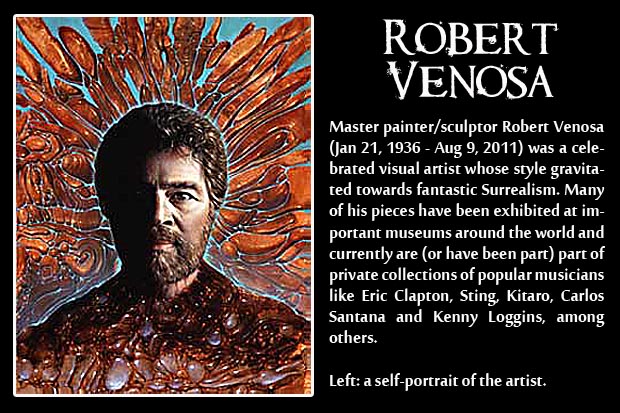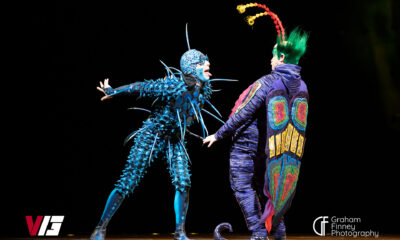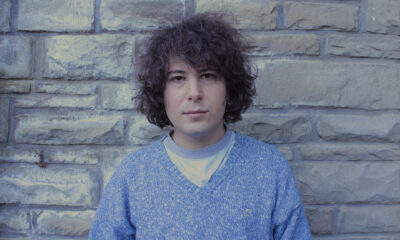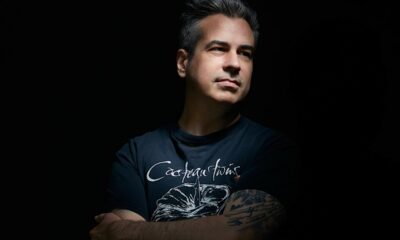Features
…And Justice For Art: Cynic’s “Focus” – The Cosmic Marriage Between Progressive Metal and Angelic Art
In many ways, Cynic’s 1993 debut full-length, Focus, was such a revolutionary recording that even by today’s standards it still sounds as current as ever. Its unparalleled uniqueness still produces amusement, especially among the legions of Progressive Metal enthusiasts. Could this album be the product of the musical maturity the young Floridian quartet found after recording their early demos? Was it maybe, the wizardry showcased by producer Scott Burns in one of his finest studio efforts ever? Or perhaps, could it be the result of a “butterfly effect”-like cosmic event happening on the other side of the galaxy? Whatever the case, the truth is that Focus rapidly became an instant musical landmark that established new standards within the world of extreme music. As founding member and guitarist/vocalist Paul Masvidal acknowledges: “We had something we were proud of. It succeeded and survived as a creative work and that’s really all that matters from an artistic standpoint. It also served the greater purpose of inspiring other musicians.”

In many ways, Cynic’s 1993 debut full-length, Focus, was such a revolutionary recording that even by today’s standards it still sounds as current as ever. Its unparalleled uniqueness still produces amusement, especially among the legions of Progressive Metal enthusiasts. Could this album be the product of the musical maturity the young Floridian quartet found after recording their early demos? Was it maybe, the wizardry showcased by producer Scott Burns in one of his finest studio efforts ever? Or perhaps, could it be the result of a “butterfly effect”-like cosmic event happening on the other side of the galaxy? Whatever the case, the truth is that Focus rapidly became an instant musical landmark that established new standards within the world of extreme music. As founding member and guitarist/vocalist Paul Masvidal acknowledges: “We had something we were proud of. It succeeded and survived as a creative work and that’s really all that matters from an artistic standpoint. It also served the greater purpose of inspiring other musicians.”

To visually represent such an arresting musical work, Cynic chose a piece from the equally groundbreaking painter and sculptor, Robert Venosa. Even before recording a single note, the band had already considered using one of the New York-born artist’s pieces to front the Focus cover. “I was a fan of Venosa’s since early childhood and collected his postcards which were plastered all over my bedroom walls”, remembers Masvidal. “When we signed with Roadrunner, I remember needing to start thinking about an album cover and immediately gravitated towards Venosa since he was my favorite artist. I contacted his publisher and they gave me his home phone.”
Masvidal admits that meeting one of his artistic heroes became a star-struck moment: “I was shocked to learn he was a living being. I was literally a teenager and won’t ever forget how incredibly nervous I was to first speak with him.” Truly, there were enough reasons to feel amazed by Venosa‘s career. At that point, he already had under his belt a vast body of work that had been exhibited all over the world while being part of museum and private collections. He had studied under the guidance of surrealist masters Ernst Fuchs and Mati Klarwein, the latter widely recognized for his cover artworks for albums like Santana’s Abraxas and Miles Davis’ Bitches Brew. At one point Venosa had been even acclaimed by Spanish icon Salvador Dali who expressed being “pleased to see spiritual madness painted with such a fine technique.”

On top of all that, during the 70’s and 80’s, the painter also became involved with both the music and film industries, producing among others, the now famous Santana logo, some cover artworks and conceptual designs for Hollywood’s Sci-Fiction films like “Dune” and later in the 90’s “Fire In The Sky”. Despite all of the artists’ successes, Paul remembers that “I encountered someone who was incredibly kind and humble. He immediately put me at ease. We spoke for hours and explored what the music meant to say in terms of a visual context. He helped me to understand the relationship between the visual and auditory medium’s and how they would become one and the same if all was aligned.”
Titled “Angelic Manifestation”, the piece that would front the Focus album cover was a perfect example of both Venosa’s ethereal artistic vision and unique painting style, commonly referred to as Fantastic Realism. “It has much of his trademark techniques”, Paul enthuses. “Like surface oil glazes which create an illusion of transparent depth and brilliant use of color. It was a an ethereal angel-like being that kept appearing to him in visions. He said he was ‘cosmically commissioned to attempt depiction of this angelic revelation.’ He did numerous pieces throughout his career trying to capture this illusive entity.” Although originally painted in 1974, the band quickly recognized in the painting close bonds with the album’s lyrical themes. “The song ‘Celestial Voyage’ for example, is a visual meditation with Venosa’s art as a subtext. ‘Sentiment’ and ‘I’m But A Wave To’ also feel like they’re of his paintings.”

At the time, the band’s intricate music was described by some people as an “anomaly” in comparison with the then relatively straight forward Thrash/Death Metal movements. Could it be possible that by using this unusual artwork for Focus, it was also a way for the band to separate themselves from their peers? “I wouldn’t say it was intentional”, Paul clarifies. “We just chose art that felt right and honest to us based on who we were. It was what we naturally gravitated to, similar to the music. We just did what felt real to us.”
Despite going on hiatus a year after releasing Focus, the members of Cynic – especially Masvidal – kept developing their friendship with the artist. Eventually, Venosa (who also created the Cynic logo and the lettering on Focus) would design or inspire all of the band’s subsequent recordings’ cover artworks (after the their 2006 reunion). “He got it, and appreciated what we were doing. I don’t think he would have associated himself with anything that didn’t feel right.” Sadly, the painter passed away in 2011 leaving behind an incomparable visual legacy and long lasting inspiration for other artists. Masvidal remembers being “deeply moved and sad” and yet feeling “fortunate enough to have spent some time with him and visit his home in his lifetime. A conversation with Venosa always ended in feeling inspired. I feel blessed to have known such a great being in my life.”

Today the original “Angelic Manifestation” painting is believed to be in the possession of a private art collector in San Francisco, California. Despite its current whereabouts, its legacy has been already secured as part of Cynic’s saga. Still, it suggests a mysterious air of otherworldliness while also provoking both amusement and reflection. “It feels like a burst of energy coming into form and aliveness”, enthuses Masvidal. “I love the colors and the energy which it carries. For me it’s a perfect marriage. The art feels like our music and shares the mystic, potent and layered complexity that Cynic’s music is expressing. It’s a celebration of aliveness and freedom. It felt like a dream come true to even have the association of our music with a master painter like Venosa. It was everything I had ever wished for and more.”

Band and Album Title: Cynic, “Focus”
Release Date: September 14, 1993 via Roadrunner Records
Cover Artwork Commissioned by: Cynic
Author: Robert Venosa
Original Dimensions: Unkown
Technique: Hand Painted, Oil and Acrylic painting glazes.
Coming Next Week: Katatonia’s “Dead End Kings” – A Vision of Man and Nature’s Decay
Previously on AJFA: Metal Artists’ All-Time Favorite Album Covers (Part 4)
-

 Culture5 days ago
Culture5 days agoCirque Du Soleil OVO Takes Leeds Fans on a Unique, Unforgettable Journey [Photos]
-

 Alternative/Rock2 weeks ago
Alternative/Rock2 weeks agoThe Hives Bring Their Swedish Swagger to Leeds O2 Academy [Photos]
-

 Hardcore/Punk4 days ago
Hardcore/Punk4 days agoHastings Beat Punks Kid Kapichi Vent Their Frustrations at Leeds Beckett University [Photos]
-

 Alternative/Rock3 days ago
Alternative/Rock3 days agoA Rejuvenated Dream State are ‘Still Dreaming’ as They Bounce Into Manchester YES [Photos]
-

 Indie6 days ago
Indie6 days agoMichele Ducci Premieres Bouncy New Single “You Lay the Path by Walking on it”
-

 Alternative/Rock6 days ago
Alternative/Rock6 days agoWilliam Edward Thompson Premieres His Stripped-Down “Sleep Test” Music Video
-

 Country1 week ago
Country1 week agoJayce Turley Reflects on “Misery” with the Premiere of His New Single
-

 Dance/Electronic2 weeks ago
Dance/Electronic2 weeks agoPerfect Female Type Premieres Synthwave Single “Science of Love”















